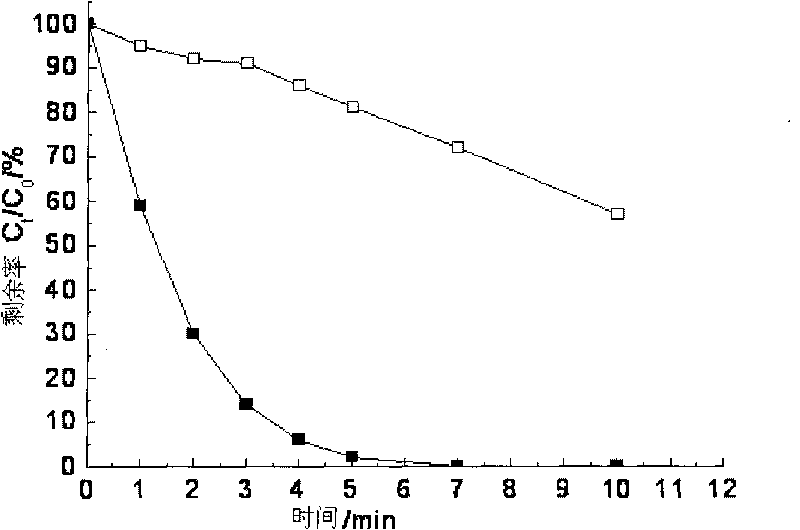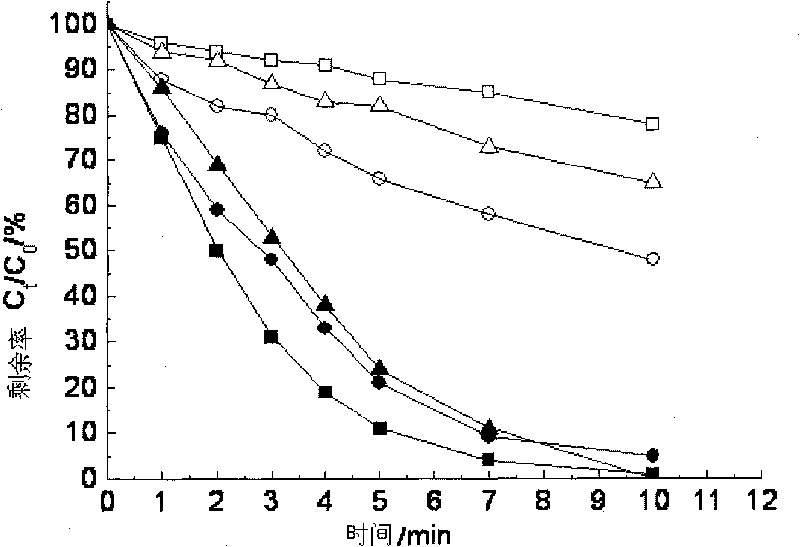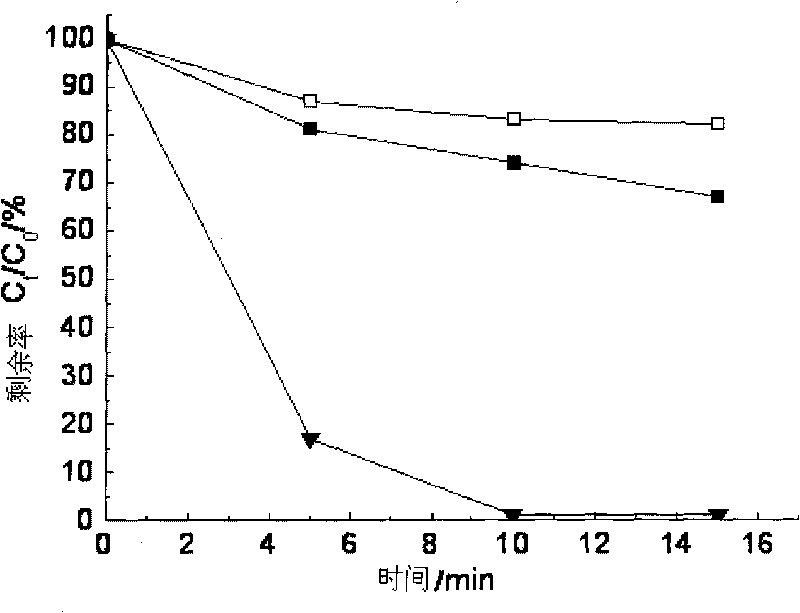Light promoting dehalogenation compound medicament/light combined method for removing halogenated organic matters in water
A technology of halogenated organics and composite agents, which is applied in the direction of light water/sewage treatment, water pollutants, water/sewage treatment, etc., can solve the problems of low removal efficiency, high cost and restricted use of halogenated organics, and achieve convenient management , improve utilization efficiency, and operate economically
- Summary
- Abstract
- Description
- Claims
- Application Information
AI Technical Summary
Benefits of technology
Problems solved by technology
Method used
Image
Examples
specific Embodiment approach 1
[0024] Specific Embodiment 1: In this embodiment, the photocatalyzed dehalogenation compound agent / photolinking method for removing halogenated organic substances in water is carried out in the following manner: add photocatalyzed dehalogenate compound agent to water containing halogenated organic substances and stir, and then light Irradiation, that is to complete the removal of halogenated organic substances in water; the light-promoted dehalogenation compound agent consists of sodium sulfite, lithium sulfite, potassium sulfite, magnesium sulfite, calcium sulfite, ammonium sulfite, sulfurous acid, sodium pyrosulfite, pyrosulfite Lithium, potassium pyrosulfite, magnesium pyrosulfite, calcium pyrosulfite, ammonium pyrosulfite, sodium dithionite, lithium dithionite, potassium dithionite, magnesium dithionite, calcium dithionite, Ammonium dithionite, potassium iodide, sodium iodide, magnesium iodide, ammonium iodide, sodium hydroxide, potassium hydroxide, potassium persulfate, so...
specific Embodiment approach 2
[0035] Specific embodiment two: the difference between this embodiment and specific embodiment one is that light irradiation adopts ultraviolet light source, visible light source or high-energy ray light source, and the light source is ozone-free low-pressure mercury lamp, medium-pressure mercury lamp, high-pressure mercury lamp, amalgam Ultraviolet lamps, halogen lamps, xenon lamps, black lamps, vacuum ultraviolet lamps, X-rays, alpha rays, beta rays, or gamma rays. Others are the same as in the first embodiment.
[0036] Visible light in this embodiment includes sunlight and artificial sunlight.
[0037] In this embodiment, the light source needs to be equipped with appropriate electrical control equipment and power supply.
[0038] In this embodiment, the power of ultraviolet UV light irradiation can be selected arbitrarily, and it needs to be determined according to the actual needs of the system (system oxygen concentration, oxygen removal rate and operating cost).
[0...
specific Embodiment approach 3
[0040] Specific embodiment 3: The difference between this embodiment and specific embodiment 2 is that the light-promoted dehalogenation composite agent is added to the water containing halogenated organic matter and stirred, then light is irradiated, and aeration is carried out at the same time, that is, the removal of halogen in water is completed. Substitute organic matter. Others are the same as in the second embodiment.
[0041] The gas selected for aeration in this embodiment can be: air, oxygen, nitrogen, helium, argon, sulfur dioxide, ozone, nitrous oxide, and it is necessary to select a reasonable gas source for different target pollutants and systems.
PUM
 Login to View More
Login to View More Abstract
Description
Claims
Application Information
 Login to View More
Login to View More - R&D
- Intellectual Property
- Life Sciences
- Materials
- Tech Scout
- Unparalleled Data Quality
- Higher Quality Content
- 60% Fewer Hallucinations
Browse by: Latest US Patents, China's latest patents, Technical Efficacy Thesaurus, Application Domain, Technology Topic, Popular Technical Reports.
© 2025 PatSnap. All rights reserved.Legal|Privacy policy|Modern Slavery Act Transparency Statement|Sitemap|About US| Contact US: help@patsnap.com



